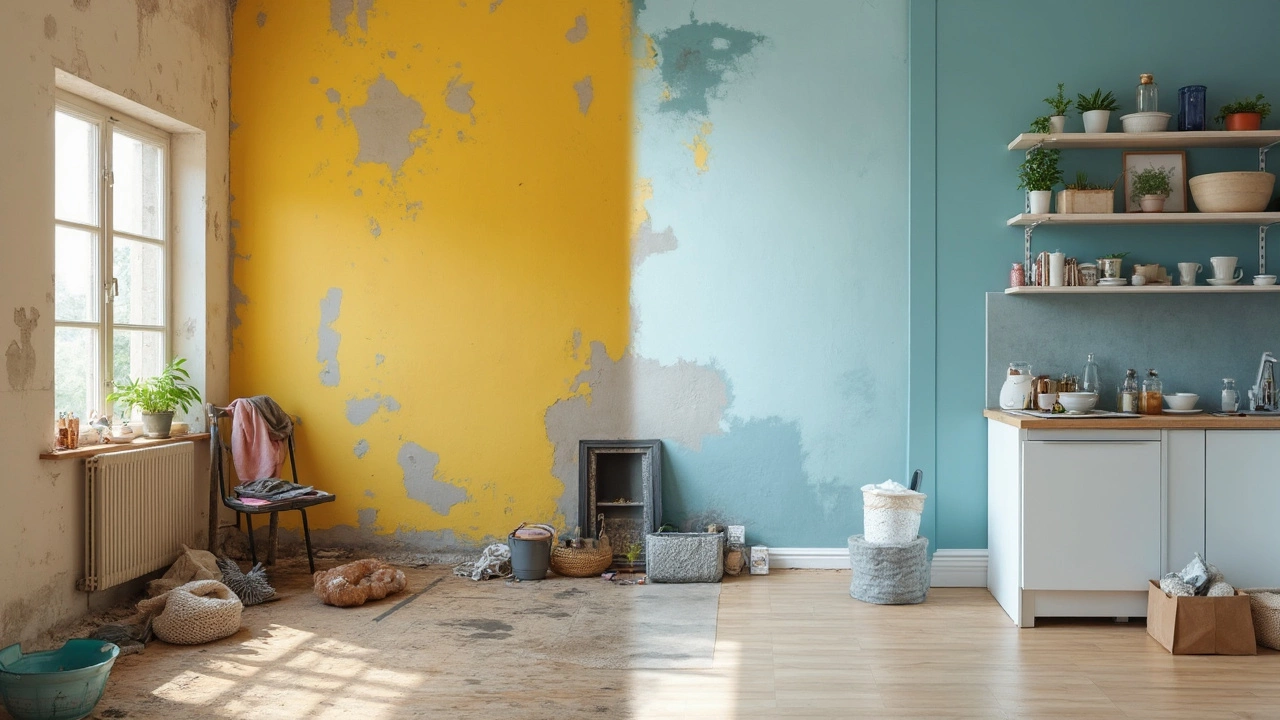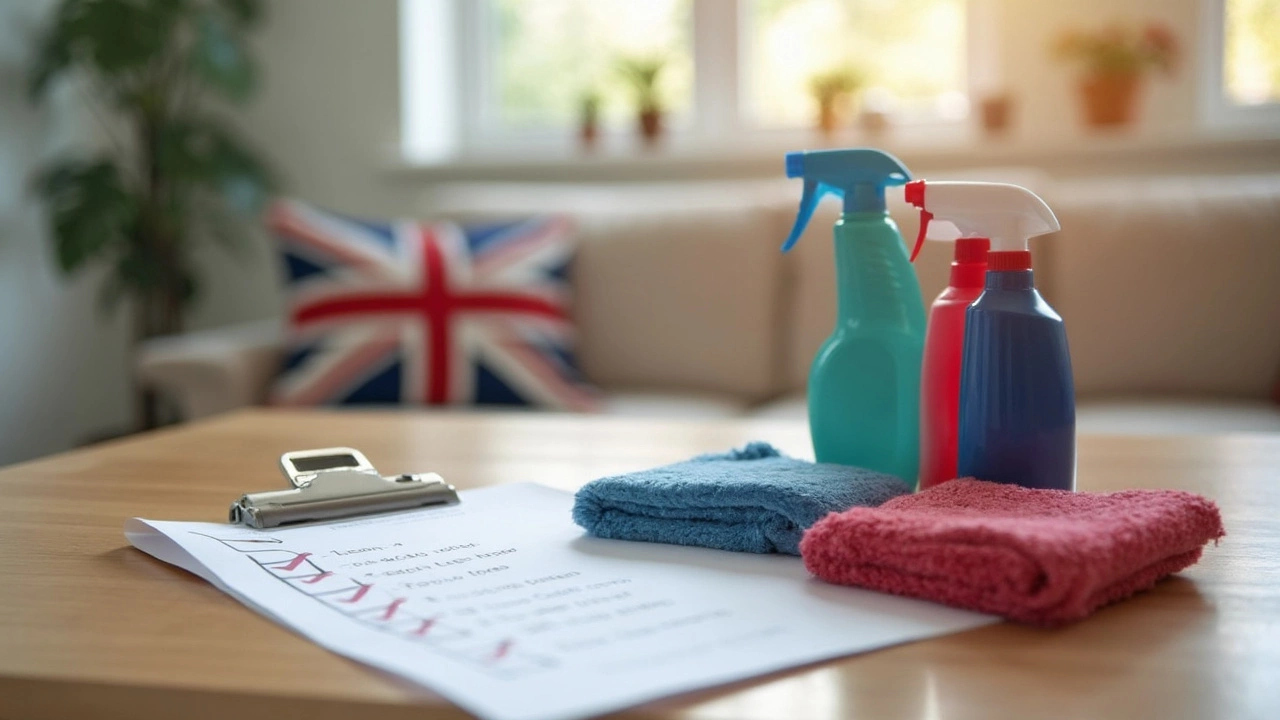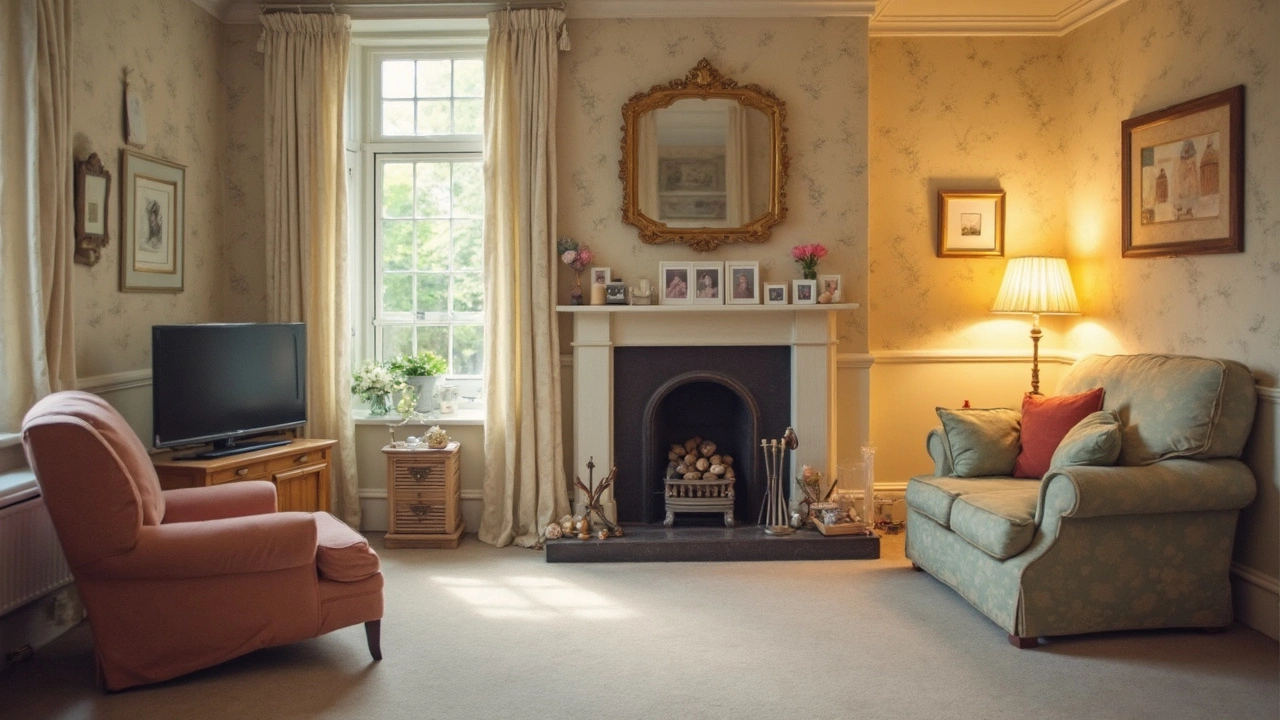Ever scratched your head trying to figure out what 'acceptable wear and tear' really means in rental agreements? You're not alone. It's a bit like the mystery of what happens inside a black hole—something everyone's heard of, but few really get.
First things first, let's clear the air. Wear and tear refer to the normal deterioration of a property as a result of everyday living. Think faded paint or worn-out carpet in high-traffic areas. It's not about the wine stain from last Christmas or the gouge in the bedside wall.
Landlords expect some wear over time, but there's a threshold. It's like car mileage: understandable for a car to clock up years on the road, not cool if it looks like it's come out of a demolition derby.
Understanding what's normal is key. For example, carpet might naturally age, but excessive stains or rips? That’s not wear and tear, mate; that's an expensive oops.
So, what's the secret to a hassle-free move-out? Knowing these subtleties could just be your ticket to getting that deposit back without a hitch. We've got some tips to help you stay on the right side of wear and tear and keep your landlord happy.
- Defining Acceptable Wear and Tear
- Common Misconceptions
- Landlord Expectations
- Preparing for End of Tenancy
- Tips to Maintain Good Relations
Defining Acceptable Wear and Tear
So, let's crack open the topic of what exactly wear and tear means. In the realm of rental properties, it's pretty much about the natural aging of things due to regular use. Over time, stuff just wears out. But what does that look like in practical terms?
Picture it: you move into a rental with a brand-new carpet. Fast forward a few years, and it's not as plush and vibrant. That dullness? Perfectly acceptable wear and tear. It's like your favorite jeans—they'll fade and lose their tightness with countless adventures.
Visible Examples
Some common signs include minor scuffs on walls, slight carpet wear in hallways, and a bit of rust on bathroom fittings. These are akin to laugh lines on a face—inevitable and expected.
What It's Not
But here’s the catch: wear and tear isn’t about visible damages that come from neglect or carelessness. For instance, a broken window isn't normal wear; it’s a sign something has gone wrong.
Legal Considerations
In the UK, tenancy agreements often follow a general rule of thumb regarding wear and tear. The government and tenancy deposit schemes often weigh in on disputes, using the standard that a tenant shouldn’t be paying for the expected decline of a rental's condition due exclusively to time and usage.
| Item | Acceptable Wear | Beyond Wear and Tear |
|---|---|---|
| Carpet | Fading | Large stains or burns |
| Paint | Minor scuffs | Major cracks or holes |
| Tiles | Discoloration | Cracks or missing tiles |
Treating Your Rental Right
Essentially, treat your rented home as you would your own. Regular cleaning and maintenance can tip the scales in your favor. Remember, landlords understand the lived-in look, but nobody likes surprises that scream 'party gone wrong'!
Common Misconceptions
When it comes to wear and tear, there are loads of myths swirling around. These misconceptions often cause headaches when tenants move out, so let's set things straight.
Misconception 1: Everything Falls Under Wear and Tear
One big myth is that any damage can be classified as wear and tear. It's not a catch-all term. Imagine a place where broken windows and water-stained ceilings are considered normal. The reality is, things like appliance breakdown or accidental damage usually don’t make the cut.
“Normal wear and tear is the expected decline in the condition of a property due to normal everyday use.” - National Apartment Association
Misconception 2: Landlords Won’t Notice Minor Damages
Some folks think landlords won’t notice little things. But savvy landlords keep inspection records and photos. A small scratch on the wall? Maybe your landlord noted it four years ago when you moved in. Always worth checking your initial inventory.
Misconception 3: Cleaning Isn’t Part of Wear and Tear
Let's talk cleanliness. Some tenants assume they don't need to clean because dirt is considered part of end of tenancy cleaning. Wrong. A filthy bathroom? Not wear and tear, that's neglect. Cleanliness is about returning the property's hygiene to its original state, not about long-term physical damage.
| Common Misconception | Correction |
|---|---|
| All damages are wear and tear | Only normal use damages apply |
| Minor damages go unnoticed | Landlords often check everything |
| Cleaning isn’t necessary | Cleaning is crucial at move-out |
Understanding these misconceptions helps to prevent a nasty surprise when you're moving out. Keeping on top of the real deal means fewer arguments and more of your deposit back in your pocket. It’s a win-win situation, isn't it?

Landlord Expectations
So, what exactly do landlords want when you move out? It's a bit like deciphering a code, but we've cracked it for you. They've got a checklist, even if they don't always share it.
Generally, landlords expect the property to be in the same condition as it was at the start of the tenancy, minus, of course, the natural wear and tear. We're talking about the overall cleanliness, the state of the appliances, and whether the walls are still where they should be.
Cleanliness is Key
One of the biggies is cleanliness. Most landlords want the property sparkling when you hand back the keys. That means those carpets might need a good vacuum, and those scuff marks on the walls might need a touch-up. A rented home left untidy isn’t going to impress—and might cost you about 75% of deposit disputes, which are commonly over cleaning issues.
Minor Repairs and Damages
Another point to consider is repairs. While some chipping paint might pass as acceptable wear and tear, gaping holes won’t. It's wise to tackle minor repairs before the inspection. Fix what you can and keep receipts if you hire a pro. It shows goodwill and could smooth things over.
Landlords often have specific expectations around furniture too. If you rented a furnished property, ensure every item remains intact and in its original spot. No one wants to be on a scavenger hunt for missing chairs.
Inventory Checklists
Most landlords provide an inventory list at the tenancy start. It details the state of each room and any included items. Keep this list handy, it’s your roadmap to meeting landlord expectations. Cross-check it when moving out and take photos of the current state for good measure.
Remember, understanding your landlord's expectations isn't about guessing; it's about keeping things fair and civil. A well-prepared tenant can walk away with no hard feelings and, hopefully, a full deposit. Keeping these expectations in mind might make the move-out process a whole lot smoother.
Preparing for End of Tenancy
Moving out can be a whirlwind, but nailing the end of tenancy process means less stress and more chance of getting your deposit back. Here's how to prepare without breaking a sweat.
Start Early
Don't wait until the last minute. Begin at least a month before moving day. Make a checklist of tasks you need to tackle—think cleaning, repairs, and final meter readings.
Deep Cleaning
This is where most tenants trip up. A deep clean isn't just a quick wipe; it's about moving furniture, scrubbing grime from forgotten corners, and tackling those oddball appliances—looking at you, oven. Consider hiring a professional tenancy cleaning service. It's an upfront cost that can save you the hassle and potentially repay itself in full deposits returned.
Repair and Restore
Fix those niggly damages like wall scuffs or scratched floors. A small pot of paint or a DIY repair kit can work wonders on minor issues and will let your landlord see you're leaving things in good shape.
Documentation
Take pictures of the entire place once it's spotless and fixed. Documenting conditions with date-stamped photos can be your lifesaver if disputes arise.
Final Checks
- Ensure you've disconnected utilities.
- Return all keys, including spares and mailbox keys.
- Empty and clean your bins—don't forget outdoor ones!
Handy tip: According to recent stats, about 10% of disputes are about missing keys, so double-check you've left everything your landlord needs.
Keeping your rental property immaculate comes down to planning, a bit of elbow grease, and smart choices. Follow these straightforward steps, and you'll be waving goodbye without any worries lining your deposit's future.

Tips to Maintain Good Relations
Moving out of a rental property can be less stressful if you remember that strong landlord-tenant relationships are built on communication and mutual respect. Here are some straightforward tips to help keep things smooth when dealing with your landlord, particularly during the end of tenancy.
1. Open Communication
Start by keeping lines of communication open. Drop your landlord a quick email or phone call when there's an issue, especially if it may lead to bigger problems later. This builds trust and shows you're proactive.
2. Regular Maintenance
Littles things can turn into big hassles if ignored. So, replace those light bulbs, tighten that wobbly kitchen handle, and regularly clean shared areas. Your effort won't go unnoticed when it's time to discuss normal wear and tear.
3. Document Everything
It's wise to document the property's condition with photos when you move in and just before you leave. This provides evidence should any disputes arise over damage versus wear and tear. Plus, it can help jog your memory!
4. Be Honest and Transparent
Stains happen. Walls get scuffed. It's life. But if you come clean about it and maybe offer to remedy it yourself—your landlord might cut you some slack. After all, they're human too.
5. Keep to Your Word
If you promise to have the place ready by a certain date, stick to it. Reliability goes a long way in building good rapport, letting you leave on good terms.
6. Consider Hiring Professionals
Sometimes, doing a deep clean is best left to the pros. A professional service specializing in tenancy cleaning knows what's expected and can relieve a lot of pressure.
7. Know Your Rights and Responsibilities
Familiarize yourself with local rental laws to understand both your rights and obligations, and share this knowledge if necessary with your landlord. It’s not just about avoiding disputes—it's about fair play.
Build on these tips and your rental journey can end on a positive note, with you feeling confident as you walk out the door, likely leaving a good impression that's worth its weight in gold—or at least in deposit money.
